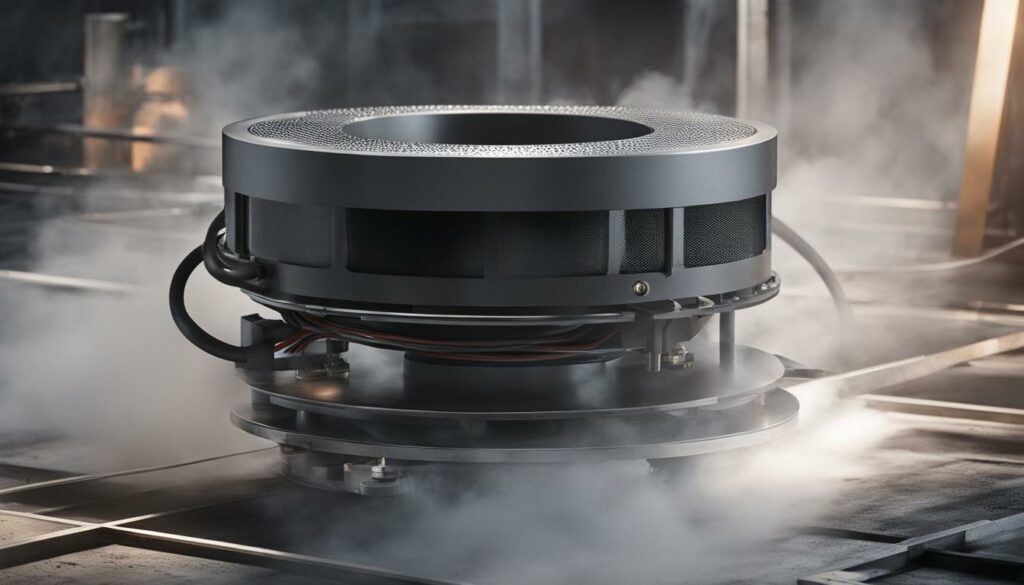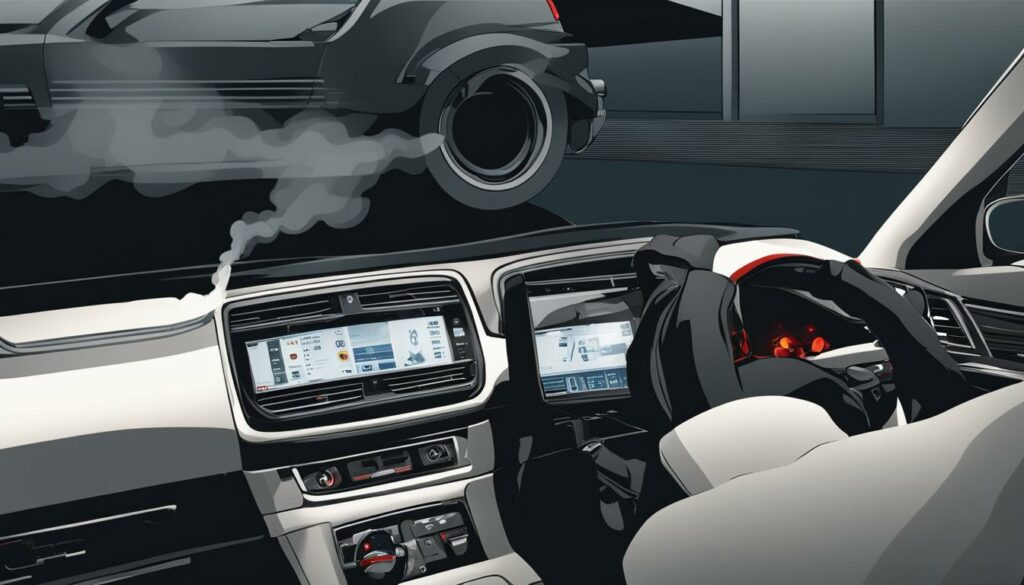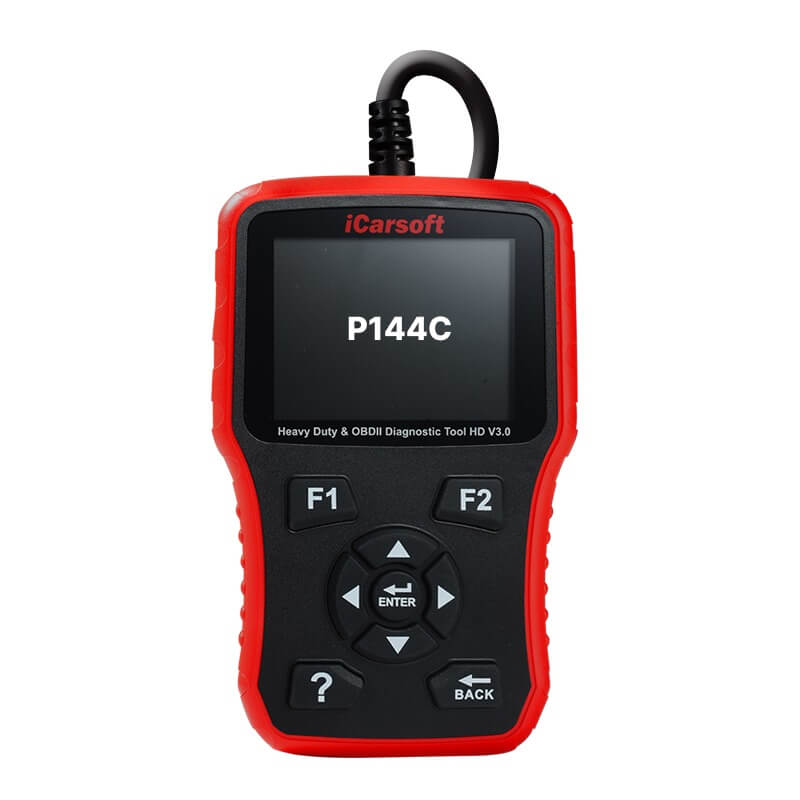P144C – DPF Differential Pressure Sensor Circuit Intermittent
POSTED IN pcodes
Welcome to our article on the P144C code and its impact on the DPF differential pressure sensor circuit. If you’re experiencing intermittent issues with your vehicle’s emissions system, particularly related to the diesel particulate filter (DPF), this article is for you. We will discuss the technical description, meaning, severity, symptoms, common causes, and troubleshooting steps for the P144C code.
But first, let’s understand the basics. The DPF is a crucial component of the emissions system in diesel engines, responsible for capturing and storing particulate matter. The differential pressure sensor circuit monitors the pressure difference across the DPF, ensuring its efficient functioning. The P144C code signifies an intermittent problem with this sensor circuit, which can have significant implications for your vehicle’s performance and emissions.
Now, let’s dive into the details and uncover what the P144C code means, how it can impact your vehicle, and what steps you can take to diagnose and resolve the issue.
Key Takeaways:
- P144C code indicates an intermittent problem with the DPF differential pressure sensor circuit.
- The DPF is vital for the emissions system in diesel engines.
- Symptoms of P144C may include check engine light illumination, reduced engine power, increased exhaust emissions, decreased fuel efficiency, and a rough running engine.
- Common causes of P144C include a faulty sensor, wiring or connector issues, a clogged DPF, or ECM problems.
- Troubleshooting steps may involve inspecting the sensor circuit, checking for damage or corrosion, and cleaning or replacing the DPF if necessary.
Now that you have a brief overview, let’s explore the technical description and meaning of the P144C code in more detail.
Technical Description and Meaning of P144C
The P144C code is a specific diagnostic trouble code (DTC) that indicates an issue with the DPF differential pressure sensor circuit. The DPF, or diesel particulate filter, is a crucial component of the emissions system in diesel engines. Its purpose is to capture and store particulate matter emitted from the engine, preventing it from being released into the atmosphere.
Buy tested tuning file for Adblue / EGR / DPF / Adblue off now!

The differential pressure sensor is responsible for monitoring the pressure difference across the DPF. This sensor measures the amount of particulate matter accumulated in the filter and communicates this information to the engine control module (ECM). The ECM uses this data to determine when the DPF needs to be regenerated or cleaned to ensure optimal performance and reduce emissions.
The P144C code specifically indicates an intermittent issue with the DPF differential pressure sensor circuit. This means that there is a problem with the circuit that connects the sensor to the ECM. The intermittent nature of the issue suggests that there may be loose connections, damaged wiring, or faulty components within the circuit.
When the sensor circuit is compromised, it can result in improper monitoring of the pressure difference across the DPF. As a consequence, the ECM may not receive accurate information about the filter’s condition, leading to potential emissions and performance problems. Resolving this issue involves diagnosing and repairing the sensor circuit to ensure reliable and accurate monitoring of the DPF pressure.
Severity and Impact of P144C
The P144C code can have a medium to high severity level, depending on several factors such as the specific vehicle and engine configuration. This code refers to an issue with the DPF (diesel particulate filter) differential pressure sensor circuit, which is responsible for monitoring the pressure difference across the DPF.
If left unresolved, the P144C code can have significant impacts on the vehicle’s performance and emissions. Here are some potential consequences:
- Increased emissions: A malfunctioning sensor circuit can lead to improper monitoring of the DPF pressure, resulting in higher emissions of harmful pollutants.
- Decreased fuel efficiency: When the sensor circuit is not functioning correctly, the engine may not optimize fuel consumption, leading to decreased efficiency and increased fuel consumption.
- Potential DPF damage: Issues with the sensor circuit can cause an imbalance in the DPF system, potentially leading to damage to the filter and requiring costly repairs or replacements.
Addressing the P144C code promptly is crucial to mitigate these impacts and ensure compliance with emissions regulations. By resolving the issue and restoring the proper functioning of the sensor circuit, you can improve the vehicle’s performance, reduce emissions, and avoid costly repairs in the long run.

Severity and Impact Overview
| Severity Level | Impact |
|---|---|
| Medium | Increased emissions |
| High | Decreased fuel efficiency |
| Potential DPF damage |
Symptoms of P144C
In the case of a P144C code, there are several symptoms that may indicate a problem. These symptoms can vary depending on the specific vehicle and engine configuration. Here are some common symptoms to watch out for:
- Illumination of the check engine light (MIL): The check engine light may illuminate on the dashboard, indicating a potential issue with the DPF differential pressure sensor circuit.
- Reduced engine power: You may notice a decrease in the power and performance of your vehicle. The engine may not respond as it normally would, affecting acceleration and overall driving experience.
- Increased exhaust emissions: A faulty DPF differential pressure sensor circuit can lead to higher levels of exhaust emissions. This can result in increased pollution and potential non-compliance with emissions regulations.
- Decreased fuel efficiency: Another symptom of a P144C code is a decrease in fuel efficiency. You may find yourself needing to refuel more frequently as the engine is not operating at its optimal level.
- Rough running engine: In some cases, the engine may run rough or experience misfires. This can manifest as vibrations, unusual noises, or inconsistent engine performance.
It’s important to remember that these symptoms may not always be present or may vary in severity depending on the specific vehicle. To accurately diagnose the issue, it’s recommended to use a diagnostic tool that can retrieve the specific error codes associated with the P144C code. This will provide further insights and allow for targeted troubleshooting to identify the exact cause of the problem.
Common Causes of P144C and Troubleshooting Steps
When diagnosing the P144C code, there are several common causes that should be considered. By identifying these potential issues and following the appropriate troubleshooting steps, you can effectively resolve the problem. The following table summarizes the common causes and the corresponding troubleshooting steps:
| Common Causes | Troubleshooting Steps |
|---|---|
| A faulty DPF differential pressure sensor |
|
| A wiring or connector issue in the sensor circuit |
|
| A clogged DPF |
|
| An issue with the engine control module (ECM) |
|
By following these troubleshooting steps, you can effectively diagnose and resolve the P144C code. It is important to thoroughly inspect and address each potential cause to ensure a successful repair.
Conclusion
When faced with the P144C code, it is crucial to address the issue promptly to ensure the proper functioning of your vehicle’s emissions system. Resolving this code requires a thorough diagnosis and repair process, which is best handled by a qualified professional or technician. Seeking the assistance of an experienced emissions system specialist will ensure that the cause of the code is accurately diagnosed and the appropriate repairs or replacements are performed.
Qualified professionals have the necessary knowledge and equipment to effectively troubleshoot the DPF differential pressure sensor circuit and other potential underlying issues. They can identify whether the problem lies with the sensor itself, wiring and connectors, a clogged DPF, or the engine control module. With their expertise, they will be able to carry out the necessary repairs or replacements to resolve the P144C code.
In situations where professional assistance is not readily available, it may be tempting to consider alternative solutions. One such solution is the permanent removal of the code by uploading the Engine Control Unit (ECU) file to a specialized portal. However, it is crucial to exercise caution before attempting any repairs or modifications to your vehicle’s emissions system. Always consult with a professional to ensure that any actions taken are safe and comply with applicable regulations.
FAQ
What does the P144C code mean?
The P144C code indicates a problem with the DPF (diesel particulate filter) differential pressure sensor circuit. This code suggests that there is an intermittent issue with the sensor circuit responsible for monitoring the pressure difference across the DPF.
How severe is the P144C code?
The severity of the P144C code can range from medium to high. If left unresolved, it can lead to increased emissions, decreased fuel efficiency, and potential damage to the DPF and other components of the emissions system.
What are the symptoms of a P144C code?
Some common symptoms of a P144C code include the illumination of the check engine light (MIL), reduced engine power, increased exhaust emissions, decreased fuel efficiency, and potentially a rough running engine.
What are the common causes of the P144C code and what are the troubleshooting steps?
The common causes of the P144C code can include a faulty DPF differential pressure sensor, a wiring or connector issue in the sensor circuit, a clogged DPF, or an issue with the engine control module (ECM). Troubleshooting steps involve inspecting the sensor and its circuit, checking for damage or corrosion in the wiring and connectors, and cleaning or replacing the DPF if necessary. Further diagnostic procedures may be required if the issue persists.
How do I resolve the P144C code?
Resolving the P144C code requires a thorough diagnosis and repair process. It is recommended to seek the assistance of a qualified professional technician who has experience in diagnosing and repairing emissions system issues. They will have the necessary equipment and knowledge to properly diagnose the cause of the code and perform the appropriate repairs or replacements.


